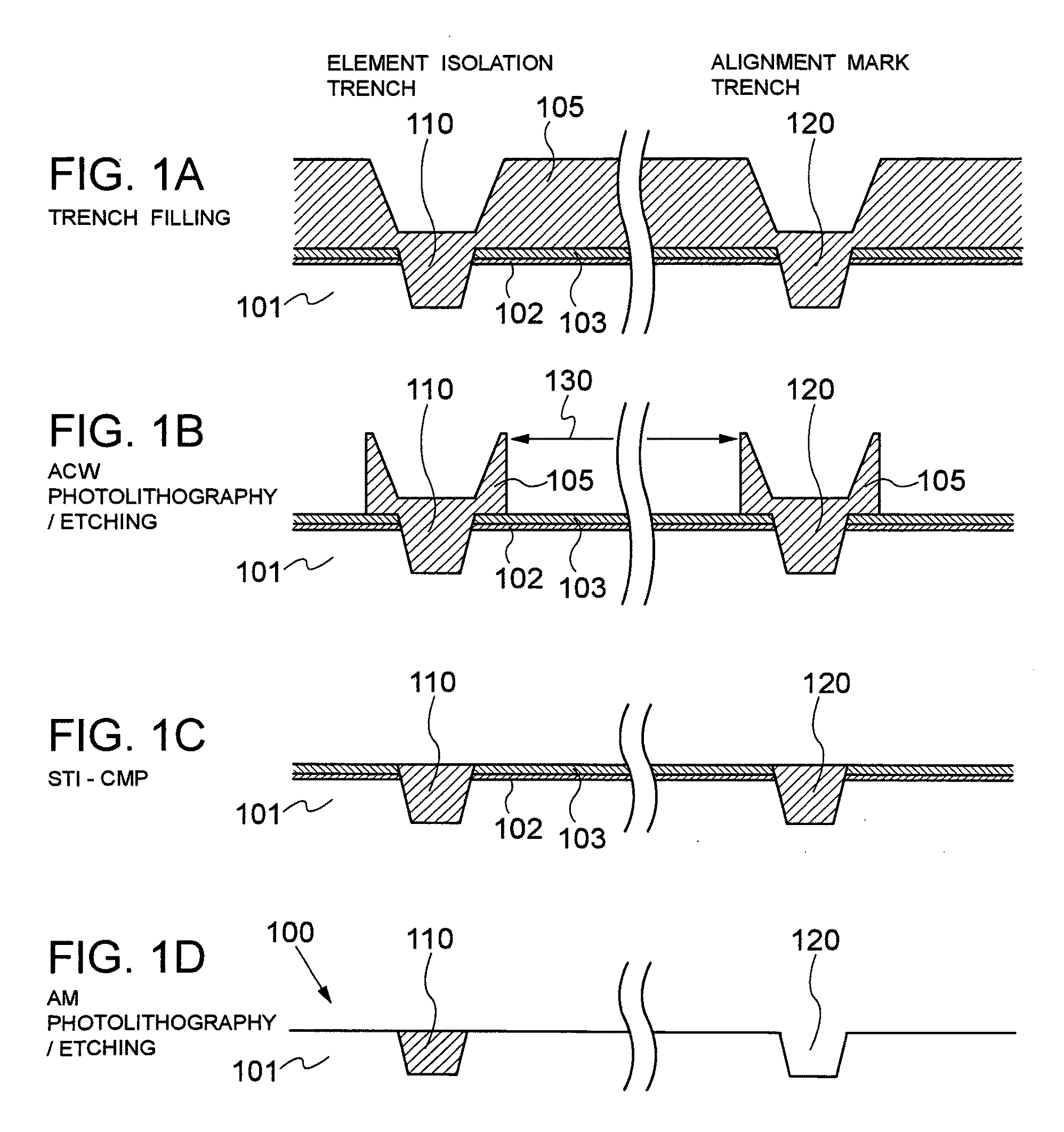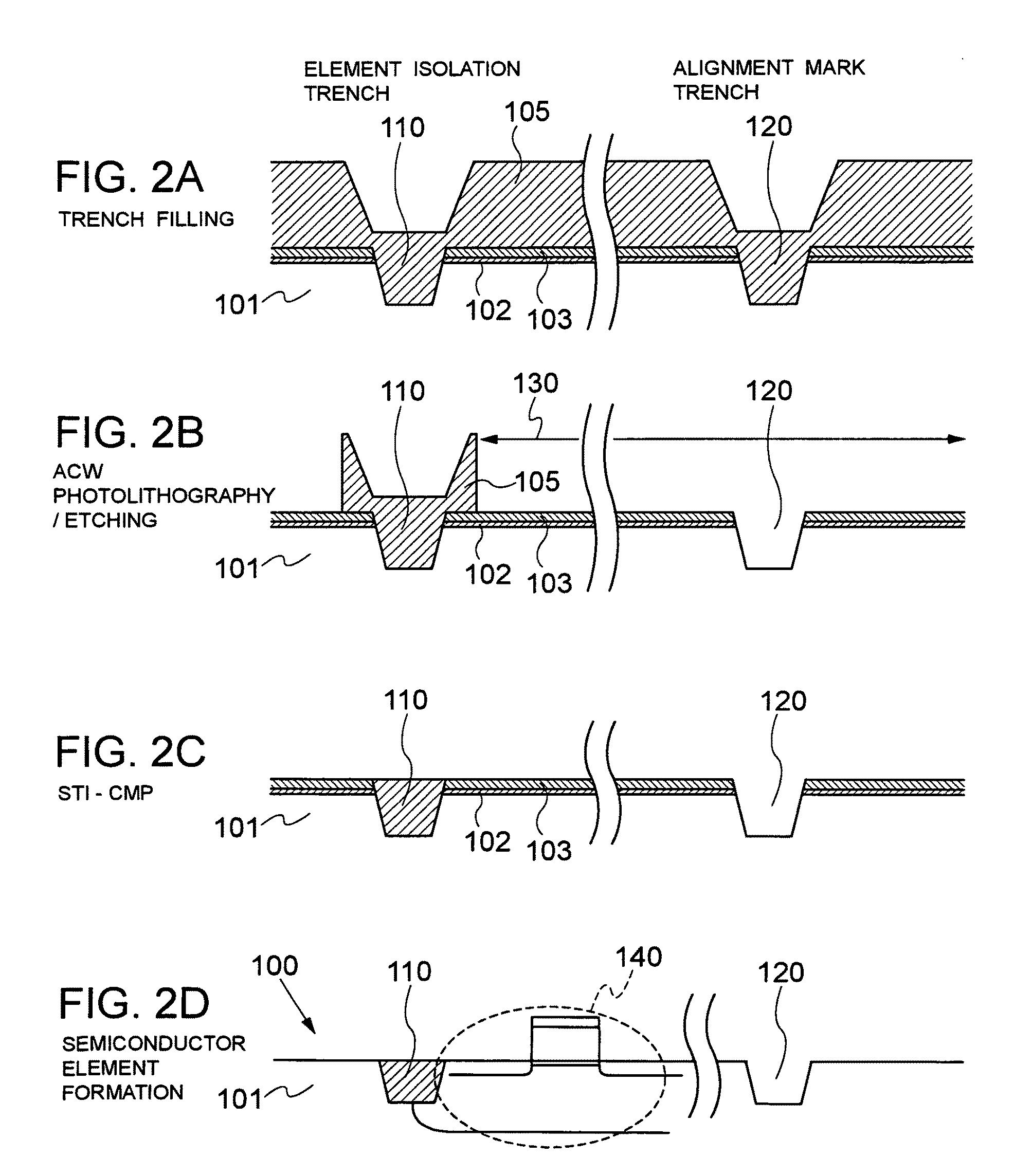Method for manufacturing semiconductor device
- Summary
- Abstract
- Description
- Claims
- Application Information
AI Technical Summary
Benefits of technology
Problems solved by technology
Method used
Image
Examples
embodiment 1
[0024]This embodiment is illustrated in FIGS. 2A to 2D. These drawings are schematic views showing a method for manufacturing a semiconductor device according to one exemplary embodiment of the present invention. The semiconductor device to be manufactured includes trenches for element separation (isolation) to divide an active region on a substrate into a plurality of individual active regions. In each individual active region, a semiconductor element such as a MOS transistor is formed. The element separation (isolation) trenches are used to separate (isolate) the individual active regions from each other. The semiconductor device also includes another trenches for alignment mark. The alignment mark trenches are formed along grid lines to define an arrangement of semiconductor elements.
[0025]In a process of filling a trench as shown in FIG. 2A, a pad oxide film 102 and a silicon nitride film 103 are formed in this order on a surface of a silicon substrate 101, followed by a photoli...
embodiment 2
[0032]Embodiment 2 is a modification to Embodiment 1. In Embodiment 1, a certain amount of foreign matters may be produced during the CMP process, and such foreign matters may remain in the alignment mark trenches. Embodiment 2 deals with this problem by using a sacrifice oxide film. In the ACW photolithography / etching process of Embodiment 2, the oxide film deposited in the alignment mark trenches is completely removed, and then the sacrificial oxide film is formed over the entire wafer including the alignment mark trenches, so as to eliminate foreign materials.
[0033]FIG. 4A is an enlarged SEM photograph showing an alignment mark part and FIG. 4B is a (virtual) cross-sectional view of the alignment mark part. Referring to FIG. 4A, a trench (TR) hole is shown in a 50K enlarged image. Some foreign materials are found in the trench. Three white circles in FIG. 4A show the locations of the foreign materials. The trench has two side walls. Referring to FIG. 4B, the foreign materials whi...
PUM
 Login to View More
Login to View More Abstract
Description
Claims
Application Information
 Login to View More
Login to View More - R&D
- Intellectual Property
- Life Sciences
- Materials
- Tech Scout
- Unparalleled Data Quality
- Higher Quality Content
- 60% Fewer Hallucinations
Browse by: Latest US Patents, China's latest patents, Technical Efficacy Thesaurus, Application Domain, Technology Topic, Popular Technical Reports.
© 2025 PatSnap. All rights reserved.Legal|Privacy policy|Modern Slavery Act Transparency Statement|Sitemap|About US| Contact US: help@patsnap.com



